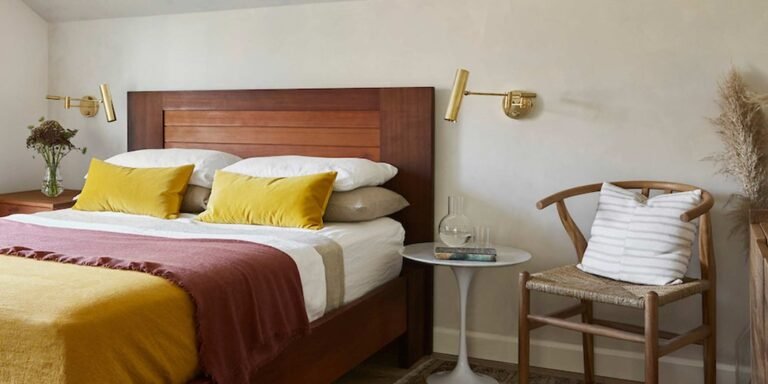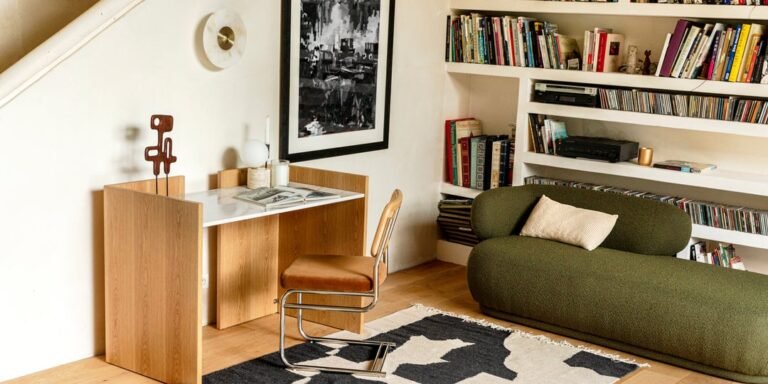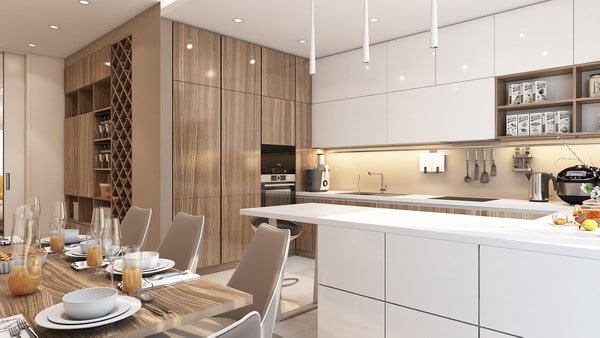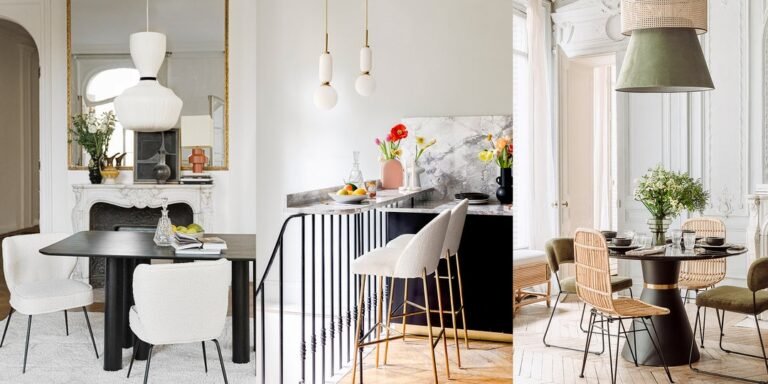What colors for the home office?
Choosing the right color for the decor of your home office can radically change your workspace. In this article, we explore how different shades can affect your productivity and well-being and help you create an environment that is perfectly tailored to your needs.
Why is color important in a home office?
Setting up a home office is not just about choosing a desk and a comfortable chair. The color of the walls, furniture and accessories plays an essential role in creating a workplace that is not only functional, but also a place where you feel comfortable. Colors have a significant influence on our mood and our productivity.
For example, shades such as sky blue or sage green can create a calm atmosphere that promotes concentration and relieves stress. These colors are ideal for activities where you have to concentrate for a long time, such as writing, programming or designing. Conversely, bright, energetic colors such as orange or lemon yellow can promote creativity and energy and are perfect for creative professions such as marketing, advertising or art.
Color psychology: An enrichment for your well-being and productivity
Color psychology is a long-researched field, and its application in home workplaces is increasingly recognized. For example, blue, which is often associated with productivity and calmness, has a calming effect that can help with concentration. On the other hand, red, which is known to stimulate energy and attention, can be used for items that require quick action or decision-making, such as a bulletin board or desk accessories.
It is also important to take into account the intensity and saturation of colors. Colors that are too strong or too saturated can be distracting or tiring in the long run, while colors that are too pale can be boring or not very stimulating. The balance is therefore of crucial importance. For example, an accent wall in a deep shade of blue or emerald green can add depth and visual interest to your office without looking overwhelming. Color can also serve to delimit different areas in a home workplace. For example, a reading or rest area may be defined by softer, calming colors, while an active work area may include more vibrant, stimulating colors.
By carefully choosing the colors for your office, you will create an environment that not only reflects your personality, but also helps to optimize your performance and well-being in everyday life. So are you ready to find out what colors could turn your office into an ideal workplace?
Blue: An oasis of productivity and tranquility
Blue is known for its calming properties and its ability to promote concentration. Think of shades like azure blue for a refreshing effect or navy blue for a feeling of stability and respectability. For example, an office with light blue walls can help you stay focused on tasks that require attention, such as data analysis or strategic planning. In addition, blue combines well with natural materials such as light wood, creating a harmonious working environment that encourages reflection.
Green: an oasis of peace
Green, the central color in the spectrum of visible light, is easy on the eyes and gives a feeling of renewal and vitality. Nuances such as mint green or forest green can turn a home office into a place of rest and well-being. It is an ideal color for rooms where you want to stimulate innovation and creative thinking. Green plants strategically placed around your office not only improve the air quality, but can also strengthen this connection with nature, which is essential for mental recovery.
Yellow: source of energy and creativity
The bright and energizing yellow is perfect for giving a workplace more dynamism. If it is used sparingly, it can stimulate creativity and provide a good mood. Nuances such as mustard yellow or golden yellow can give a sophisticated and warm touch. It is an ideal color for a brainstorming room or a creative workshop where mental stimulation and inspiration play a key role. To balance their intensity, combine them with neutral tones, such as gray or white.
Grey: simplicity and modern elegance
Gray is often perceived as a neutral color, but its potential in a home office is immense. It offers a simple and elegant background that promotes concentration. Nuances such as pearl gray or charcoal can be used to create a refined and professional workspace. Gray is also an ideal background for more bold color accents, so you can customize the room depending on the season or mood. In addition, it can be easily combined with modern materials such as metal or glass, creating a contemporary and at the same time timeless working environment.
White: elegance and openness
White is often considered the primary color, but its potential in a home office is considerable. It creates an atmosphere of clarity and openness, ideal for those who want to maximize natural light and give a feeling of spaciousness. White can also serve as a neutral background, which allows you to incorporate more daring design elements without running the risk of cluttering up the space. For example, a white desk together with colorful chairs or works of art can create an attractive focal point without distracting.
Pastel colors: Gentle and balanced
Pastel colors offer a soothing alternative to bolder shades. They are particularly suitable for creating a quiet working environment that promotes concentration and relaxation. Nuances such as delicate lavender or pale coral can also help to soften rooms with a lot of natural light, thus avoiding glare and eye fatigue. In addition, pastel colors combine well with natural textures such as linen or cotton and give the workplace a pleasant tactile dimension.
Red and orange: dynamics and inspiration
Red and orange are energetic colors that can breathe life and passion into a home office. Used wisely, they can stimulate creativity and provide welcome dynamics, especially in creative areas. A red accent wall behind a desk can serve as a stimulating focal point, while orange accessories such as pillows or lamps can set color accents without looking overwhelming.
Color combinations: harmony and personality
The art of color combination can turn an ordinary workspace into a truly personal place. Combining complementary colors, such as navy blue and mustard yellow, can create an interesting contrast, while maintaining visual harmony. Similarly, analog shades, such as different shades of green, can provide a smooth transition for a more subtle and natural effect. The use of different textures and materials, such as wood, metal and fabrics, can also help to balance and enrich the effect of the chosen colors.
Conclusion: choose the ideal color for your office
The choice of colors for your home office goes far beyond a mere aesthetic preference. It is a strategic decision that affects your well-being, productivity and creativity. By choosing the right shades that will inspire and calm you, you can turn your workspace into an oasis of peace and efficiency. So, what palette will you choose to paint your working world at home?






